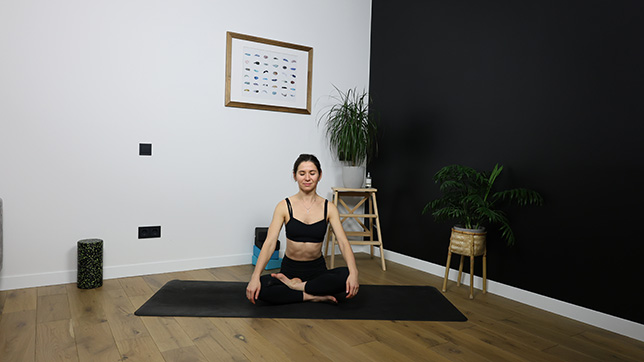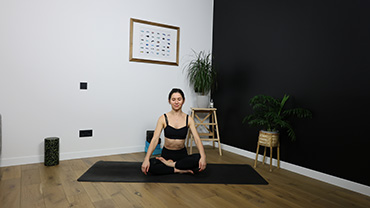Half Lotus Pose - Ardha Padmasana

Contents
Half Lotus Pose, also known as Ardha Padmasana (ara-dhah pahd-MAH-suh-nuh), is a seated yoga posture that serves as a pathway to achieve Padmasana. The name is derived from the Sanskrit words “ardha,” meaning half, “padma,” referring to lotus, and “asana,” denoting yoga or posture.
In this pose, one leg is folded in, allowing the foot to touch the inner thigh of the opposite leg. Subsequently, the other leg bends in, with the foot lifting and resting on the thigh of the opposite leg. The hands can be placed on the knees, thighs, or lap.
By assuming this asana, the body can maintain a still position for extended periods, enabling the mind to concentrate and focus. Regular practice of this pose enhances mindfulness and cultivates heightened awareness, which greatly contributes to mental and emotional well-being.
Pose Detail
- By Type: Hip Opening Yoga Poses, Meditation Yoga Poses, Restorative Yoga Poses, Strengthening Yoga Poses
- Difficulty: Intermediate
- Body Position: Seated Yoga Poses
- By Benefit: Yoga Poses For Periods, Yoga Poses For Stress Relief
Step-by-Step Instructions
Benefits and Contraindications
Stretches and strengthens your ankles, knees and inner thighs
Calms your mind and relaxes your body
Good pose for meditation and Pranayama also
Gives relief in sciatica and menstrual pain
Chronic sciatica
Injury or had recent surgery on the knees, ankles, spine, hips, or hamstrings
Rheumatoid arthritis
Tailbone pain
Photo poses in different angles

Modifications and Props for Beginners
- Placing a folded blanket underneath the hip of the leg that is folded underneath can help to elevate it and provide more support, making it easier to maintain the pose.
- Placing a yoga block underneath the knee of the leg that is folded underneath can help to reduce the strain on the knee and make the pose more comfortable.
- If reaching the foot of the leg that is on top of the thigh is challenging, you can use a yoga strap to hold onto the foot and bring it closer to the body.
Useful Tips
- If you are holding the pose for breathwork, and meditation, make sure to change the cross of your legs so that you are practicing both sides for approximately the same period of time. You can either set a timer and change the cross of your legs during your meditation, or practice with a different leg on top every day.
- If you feel any pinching or sharp pain in your knees or ankles, get out of the pose immediately.
- Slightly engage your core by tucking the tailbone and drawing your belly button up and in.
Try to stay grounded equally through both sitting bones. - Keep your chest lifted and extend through the top of your head.
You can keep your hands in Prayer, rest them on your thighs, or try any other mudra you like.
Frequently Asked Questions
Half Lotus Pose can be practiced by anyone, but it may be more challenging for those with tight hips or knee issues. Beginners should practice under the guidance of a qualified yoga teacher.
It is generally not recommended to practice Half Lotus Pose during pregnancy as it puts pressure on the abdominal area and can cause discomfort. It is best to speak with a healthcare provider or a qualified yoga teacher before practicing any yoga poses during pregnancy.
Hold the pose for as long as it is comfortable, but aim for at least 30 seconds to 1 minute on each side. You can gradually increase the duration over time.
If you experience discomfort or pain, come out of the pose slowly and gently. You can modify the pose with props or practice an easier variation such as Easy Pose. It is important to listen to your body and not force yourself into the pose beyond your limits.
Variations
- Half Bound Lotus Seated Forward Bend
- Lotus Pose
- Bound Lotus Pose
- Half Lotus Pose Against a Wall
- Half Lotus Pose With Hips Elevated